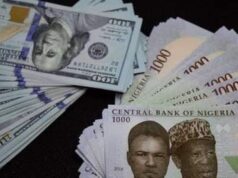By Charles Robertson
WED 13 OCT, 2021-theGBJournal- I’m old enough to remember when Turkey was going to join the ranks of the top 10 economies of the world – today the IMF thinks it has dropped out of the top 20. It always used to be about 17th. Russsia is in 11th place and Brazil is 12th (both used to regularly be in the top 10).
Together – as if they’d ever be seen “together” – the US, China … along with Japan and Germany represent 52% of the world economy.
The key message of this graph is the value is in EM ex-China. I’ll let you know when value is the trade worth getting into. Probably after it’s happened.

Dan’s main take-away is in the email below – and he’s right for the main economies that the IMF bothered to update in July 2021. No big changes when we look ahead to 2022
However, for a whole host of the Frontier and African credits – these IMF revisions are important, because there are no Bloomberg consensus forecasts out there, and there are some really big changes since the April 2021 release.
This is most obvious in the current account forecasts, which I’ve mentioned a few times were far too cautious on the commodity exporters.
If we look at the rhs of this graph – and the dotted line – you can see the C/A revisions since the April forecasts. The amount is in the country name in brackets. Six countries have seen their C/A forecast for 2021 improve by at least 6 percentage points of GDP. Among the Eurobond issues, this includes Angola (6.6% of GDP better, instead of near balance in 2021 – the C/A is expected to be a very big 7.3% of GDP). Zambia is better by 7% of GDP giving a 2021 C/A surplus of 13% of GDP. Rep of Congo also looks much better.
Mozambique’s gas fields were put on pause in 2021 until Rwanda’s soldiers sorted out the security issue – which is presumably why it’s C/A got 35% of GDP better.
Among the countries we look at, Nigeria has actually managed to get worse in 2021 by 1% of GDP – due to poor oil output, combined with some foreign borrowing which has supported growth and imports. Oil exporting Gabon is 3.5% of GDP worse than before. Otherwise it’s the tourism resorts that have lost out a little.: Mauritius, Cape Verde, Namibia, Rwanda etc.

What else caught my eye ?
The IMF has given up forecasts for Ethiopia. Nothing from them for 2022 onwards and 2021 growth is now put at just 2% for 2021. That weird few months in April and May where the market pushed the Eurobond price up from 92 cents to 97 cents on the dollar, has long passed. Probably only a few trades are why the 2024 bond is now trading at 83 cents. Much more sensible.
Senegal expected to grow at 11% in 2023 which is presumably when its fossil fuel projects come on stream. Growth will be nice on either side of 2023 as well, 6% in 2022 and 9% in 2024. From 2020-25, Senegal’s economy will grow by 44% which is extraordinary. If they manage the oil as well as Nigeria in 2002-08 (yes, Nigeria used to be a template of good policy), then we can say goodbye to that Moody’s negative outlook on the Ba3 and the single B+ rating by S&P and say hello to rating upgrades and the BB world from both agencies. But Africa hands will remember Ghana and the oil-inspired hopes there. Didn’t pan out quite as hoped.
Looks like the Senegal 2048 Eurobond (white) is purely trading off US 30 year moves (in blue) though.

Ghana has a slightly better C/A outlook (I guess oil helps) .. with a 2% of GDP deficit in 2021 vs 3% estimate before. Horrible budget deficits though -14.5% in 2021, -11% of GDP in 2022 and -10% in 2023, and these are worse than before. Yet IMF only sees public debt rising from 79% of GDP in 2020 to 86% of GDP in 2023. Yes GDP will grow 5-6% and CPI will be 8-9% but high real rates and high debt is a dangerous mix over the long-term. They need some FDI and manufacturing export growth. Some positive fiscal surprises vs these IMF estimates would be very helpful too. I need to delve into the Ghana figures.
I’ll finish off with the IMF C/A revisions for EM. Biggest shift is SA .. which is why I’ve kept the ZAR14/$ despite everything this year. Russia’s C/A better by 1.8% of GDP reckons IMF.

 Why isn’t the ZAR14/$ call working right now? Because the USD has strengthened, despite it being responsible for nearly 2/3 of the world’s current account deficit. Lucky Americans. For the US, a current account deficit is a sign of strength (high growth etc) and they can borrow and spend lots and it’s all fine. Don’t tell Erdogan- this will just upset him.
Why isn’t the ZAR14/$ call working right now? Because the USD has strengthened, despite it being responsible for nearly 2/3 of the world’s current account deficit. Lucky Americans. For the US, a current account deficit is a sign of strength (high growth etc) and they can borrow and spend lots and it’s all fine. Don’t tell Erdogan- this will just upset him.

CONCLUSION: Pretty helpful improvements in the C/A forecasts for a number of African issuers. Doesn’t offset the US treasury sell off at present, but definitely a positive here for Senegal.
Charles Robertson is Global Chief Economist, Renaissance Capital
Twitter-@theGBJournal|Facebook-The Government and Business Journal|email: govandbusinessj@gmail.com









